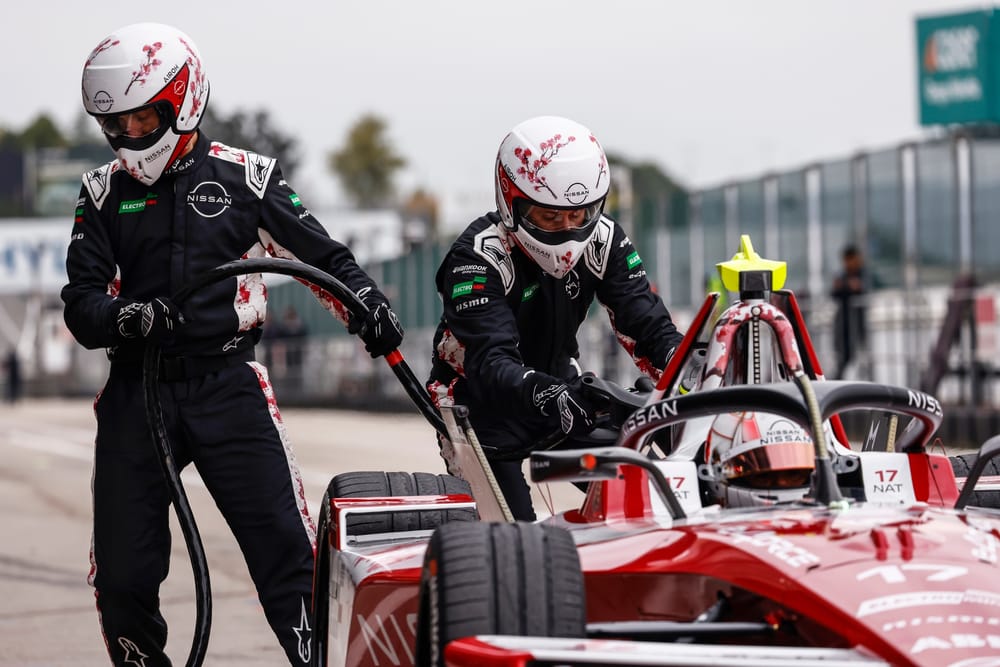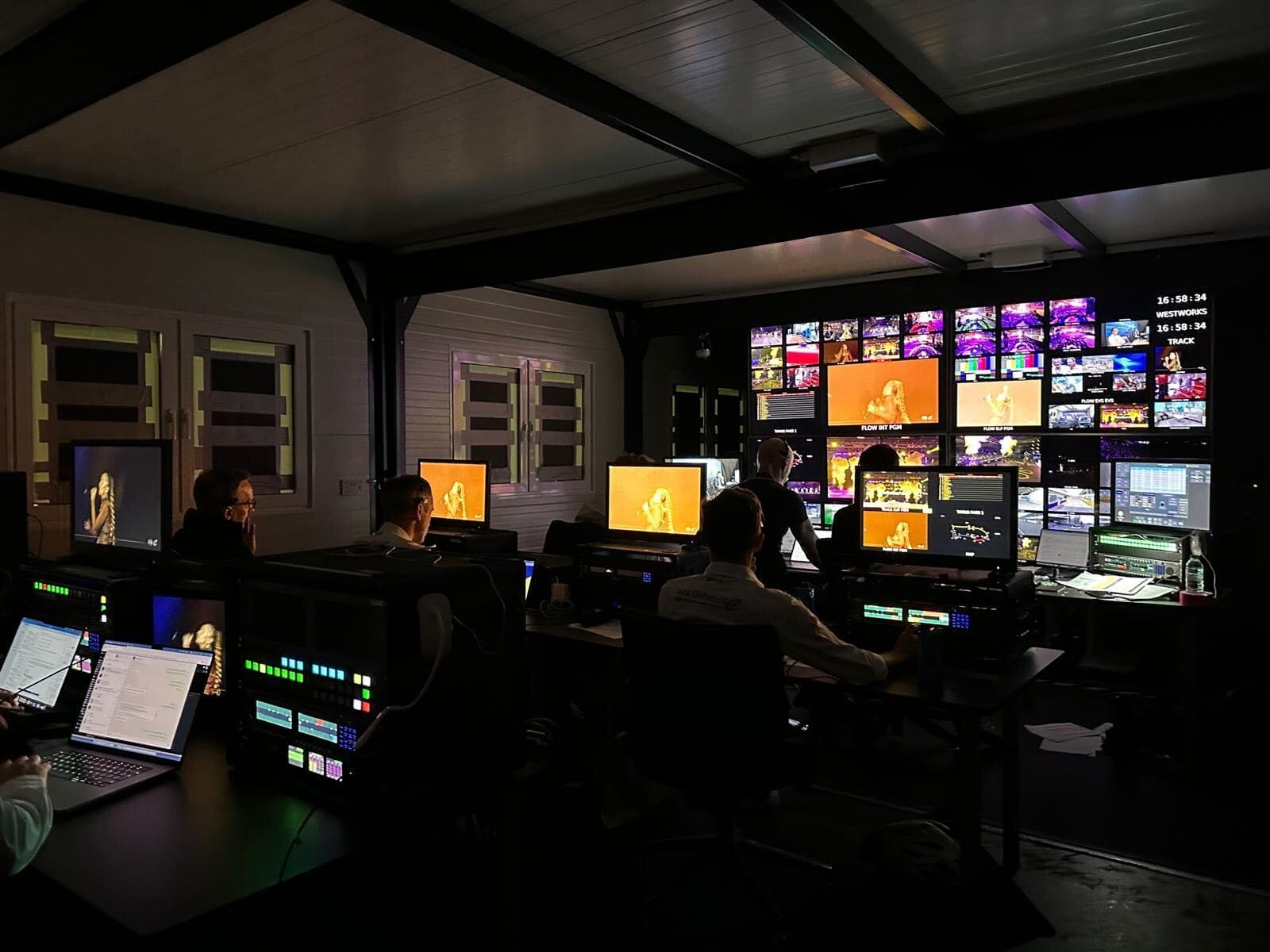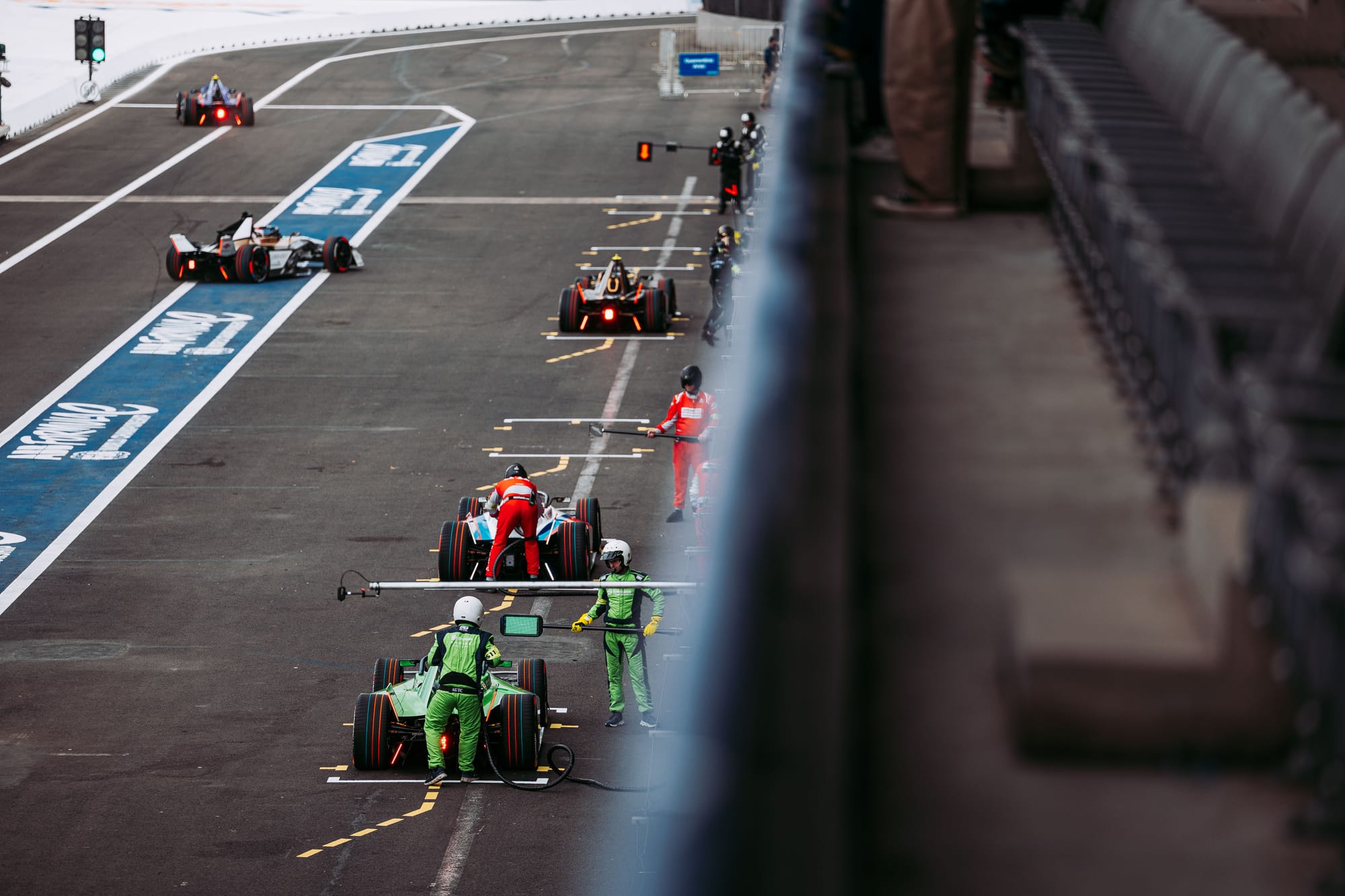Formula E breaks new ground this week as, after multiple delays, its Pit Boost recharging technology - which offers a 10% energy increase (3.85kWh) - will finally be used in-race for the first time.
And while that can hardly be classified as jumping in at the deep end considering just how long the series has been waiting to get this up and running, its step into the unknown is that bit more unpredictable because the first race of the Saudi Arabia weekend has been selected for its first deployment, rather than the second.
There has been wholesale surprise that the FIA selected the Friday race over the Saturday one, not only because some teams are not completely confident that the Pit Boost doesn't affect the RESS battery (or certain that it's consistent in the temperature readings from one unit to the next), but also because Jeddah is a new track to Formula E and there are myriad challenges for teams to get on top of, including energy targets and understanding grip levels.
"Normally at a new circuit, when you put down your energy numbers you don't really know what the grip level is like and you don't know what the performance of the cars is going to be like," McLaren team manager Gary Paffett explained. "So we might've got the energy calculations for the race wrong.
"So, to have a clean, normal race first would have been a good idea from our point of view, to get an idea [that] this is where it stands compared to other races. And if they really needed to, they could have updated it for the Saturday and said, 'actually, then we need to just adjust the laps a bit'.
"But now we're going into a lot of unknowns: unknowns about the circuit and about the energy consumption and an unknown with regards to the Pit Boost."
Plenty to trip teams up, then - let's explore those hazards in more detail:
A safety car lottery?
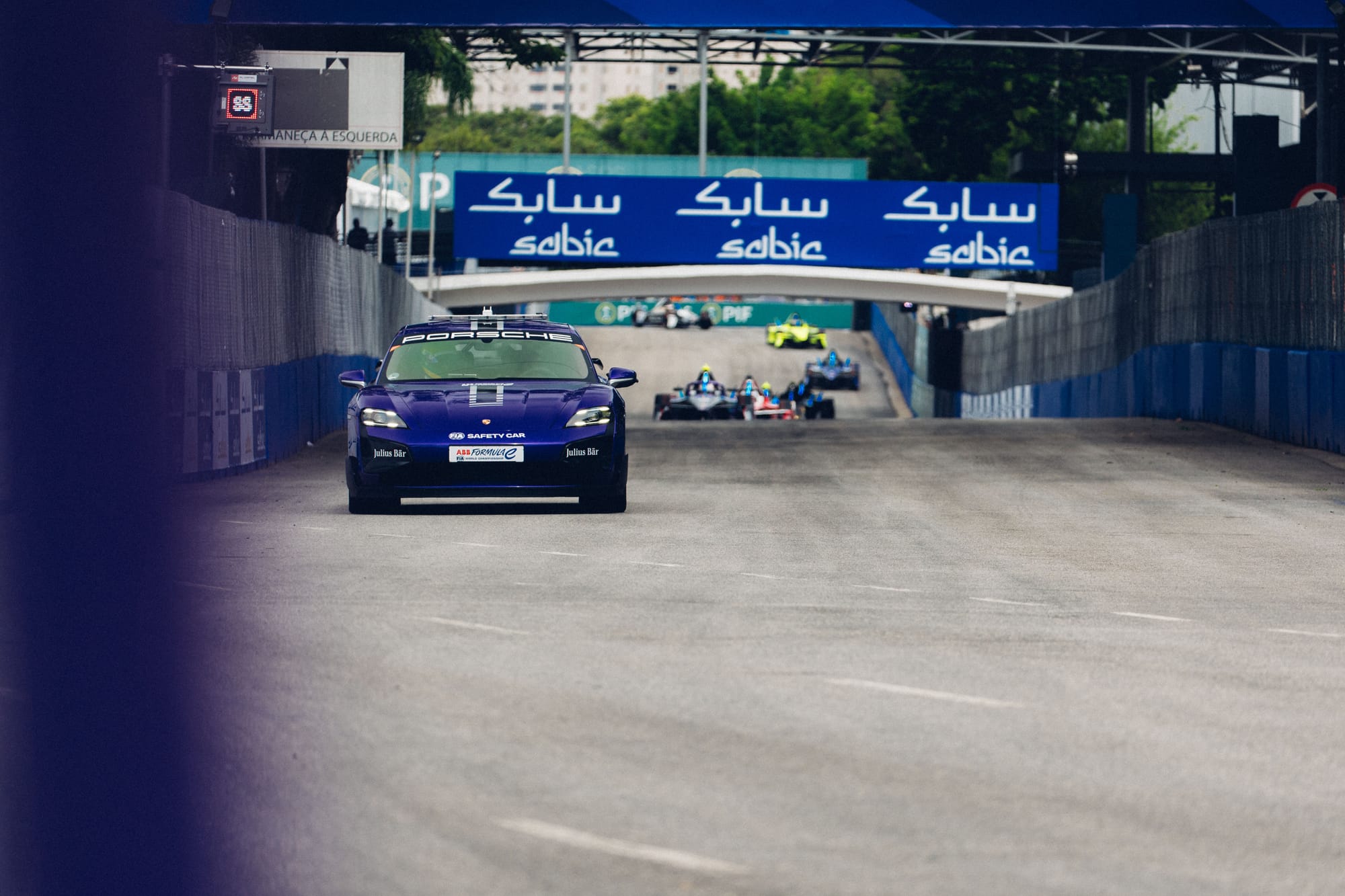
Race neutralisations and pitlane/strategy aberrations often go hand-in-hand in motorsport. Formula E's new Pit Boost era will likely follow suit on occasion, in particular should a safety car be timed in conjunction with pitstops being made.
In the scenario a safety car is deployed the pitlane will not be closed, meaning that Pit Boost can be taken while the race is neutralised. Should this happen within the state-of-charge window and potentially just after that threshold is reached, expect half of the field to pit and the race to be effectively split into two, depending on when the safety car is then withdrawn. Only one car per team can stop at a time. 'Double stacking' is banned.
A slightly confusing phrasing of the sporting amendment to Article 38.11 from last December states: "Under certain circumstances the race director may ask the safety car to use the pitlane. In these cases, and provided its lights remain illuminated, all cars must follow it into the pitlane without overtaking. Any car entering the pitlane under these circumstances may stop at its designated garage area.
"Other than when the cars and the safety car are required to use the pitlane, no car may enter the pits whilst the safety car is deployed unless it is for the purpose of performing the Pit Boost, changing tyres or performing any work on the car."
The jeopardy of a race being completely screwed for one half of the field is therefore considerable if a safety car plays out because one car from each team could clear their Pit Boost stop during the safety car then rejoin the queue right behind those who haven't stopped yet.
One interesting, extra scenario involving tyre changes could play out at the Tempelhof airfield track in Berlin in July, such is the quirky and potentially degrading surface there. Tyre changes aren't planned in the Pit Boost stops, but an extra 10-12 seconds to take four new Hankook tyres could pay off if the temperatures are as extreme as they were the last time Formula E went there in the height of summer back in 2021.
Accuracy penalties
The Race has acquired the dimensions and examples of how cars need to stop in a designated area in their pit. These are 2.2 metres wide and almost 3m in length, meaning there should be plenty of space for a smooth placement of the car.

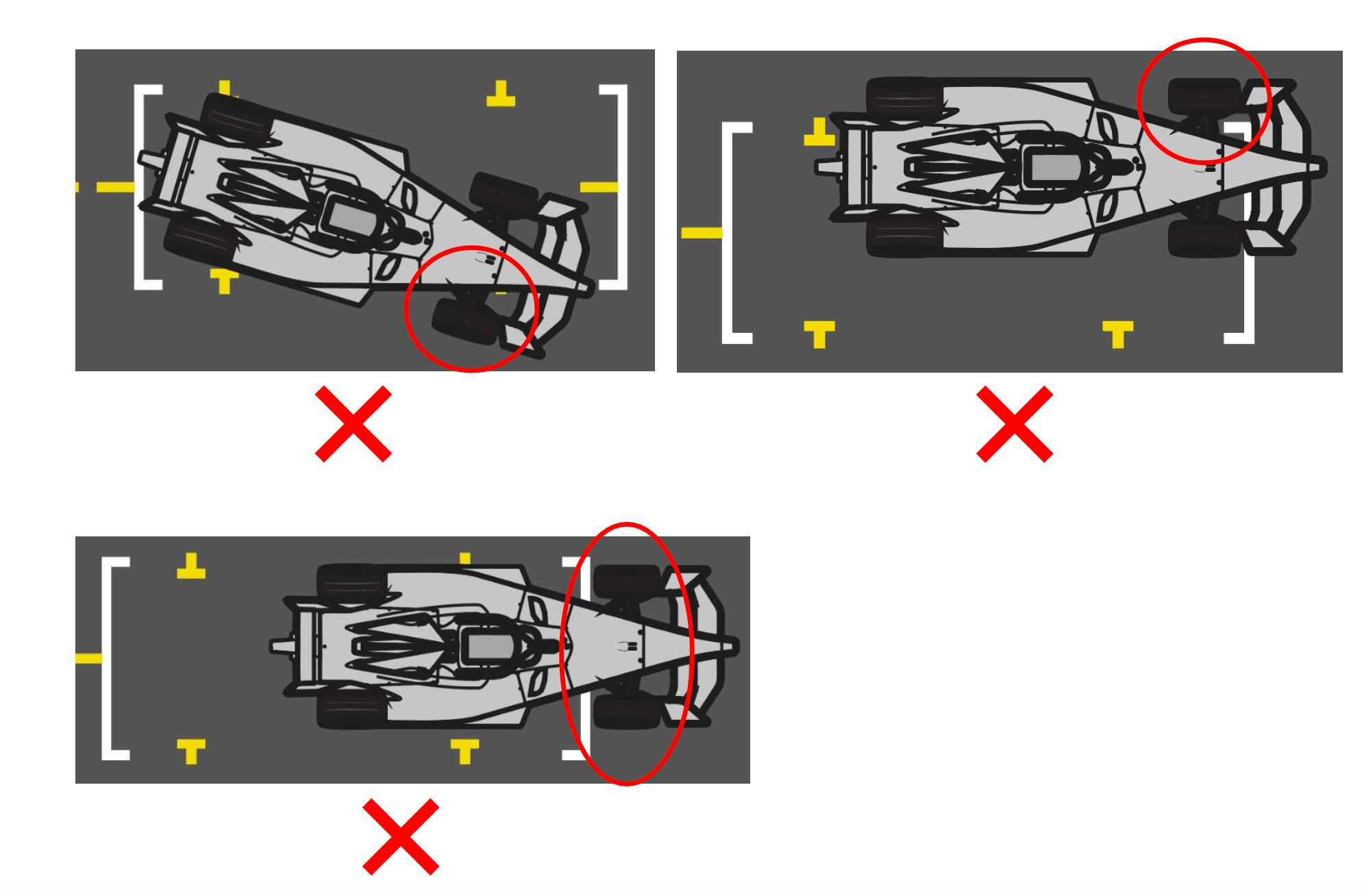
Cars must be stationary with "no part of contact patch of tyres outside the white lines" on either the front or rear sides. CCTV will be located above each position to monitor this and any infringement will be reported to the stewards.
Should half of the field pit at the same time, which is a feasible maximum as the rules do not allow for double-stacking, then some could be compromised when swinging in and out of their designated boxes.
However, the relatively sedate nature of the 34-second minimum stops means that the drivers actually should have no real excuse not to hit their marks accurately, despite the fact there is no human waiting for them, as is the case in Formula 1 and other series.
The view from the cockpit in Formula E is not fantastic for the front positioning of the cars but the boxes should be more than adequate to park into as long as the approach is not obscured too much.
Blending and releasing
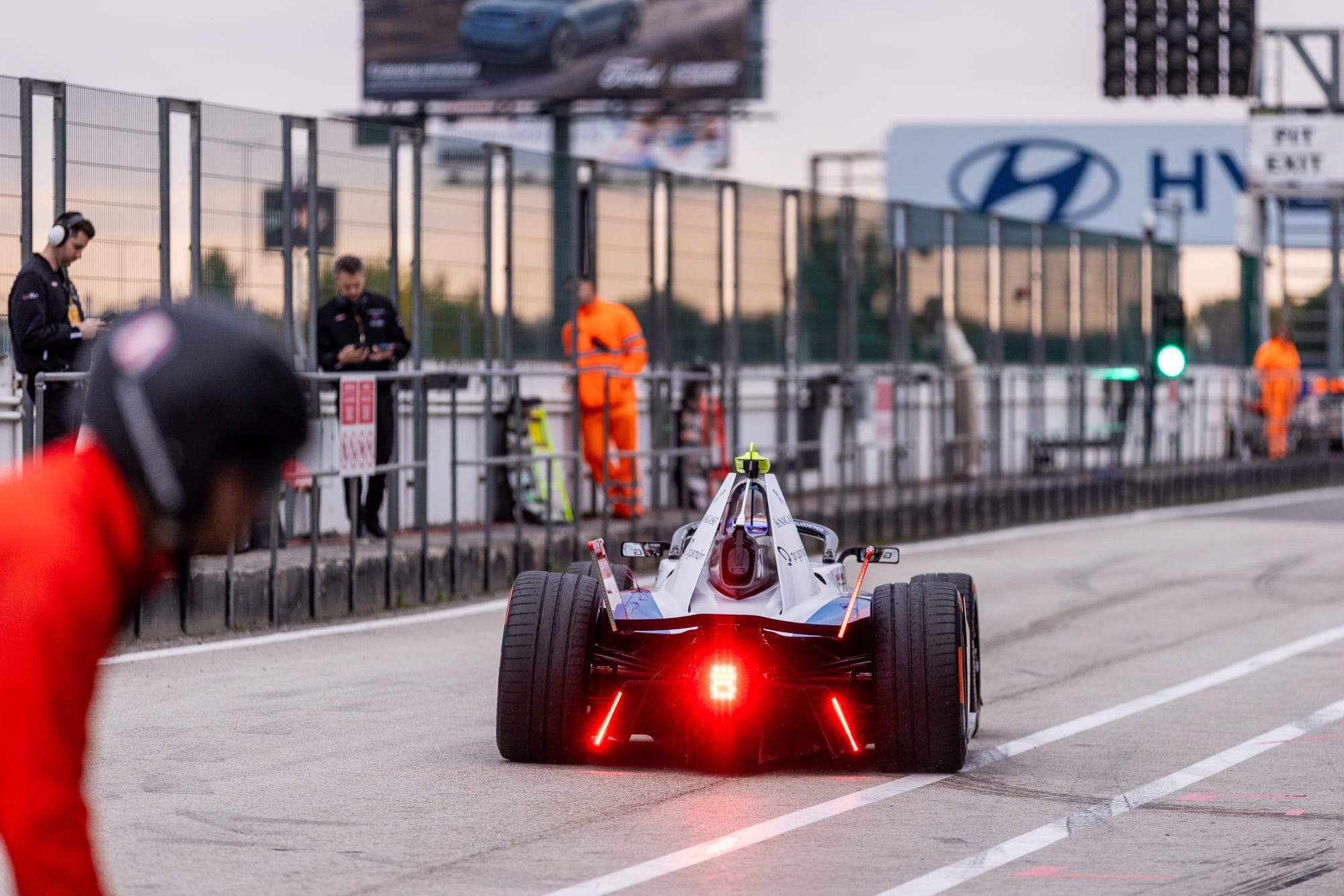
"The big thing is going to be how you rejoin the track afterwards because you don't want to impede another car," Andretti team principal Roger Griffiths told The Race.
"What are the rules of engagement there? And I'm sure it's going to be a hot topic in the drivers briefing.
"We've certainly seen a couple of updates coming from [the pre-season test at] Jarama, particularly around the positioning of personnel within the pitlane to be on the side of caution and put people on the garage side rather than out in the pitlane, so I think that helps somewhat."
There are plenty of questions still to be answered about the minutiae of etiquette as Pit Boost is implemented. It's a concern shared to some degree by one of Griffiths's drivers, Jake Dennis.
"From my understanding, there's still no clarity of what the blending rule situation is right now," Dennis said when The Race visited Andretti's Formula E headquarters in late January.
"If there is blending, then that's fine. It just needs to be consistent. But I don't know how they will police that in pitlanes which we cannot blend in to. There's going to be certain tracks where we just physically can't."
There are also smaller points such as the positioning of the first and last teams in the pitlane, which will be Jaguar closest to the pit exit and Lola-Yamaha Abt at pit entry. Each has inherent advantages as Jaguar's drivers can surge straight out of their box without the same amount of steering input as the rest of the field, while the Lolas will have a clear run into their boxes.
"There needs to be an element of cones in front of them acting as an imaginary car," suggested Dennis.
"As long as that's rectified and it's consistent, whether we do blending or no blending, I'm not too bothered."
Maserati MSG team principal Cyril Blais is going for the calm and pragmatic approach, telling The Race: "Everybody's got the same minimum pitstop time so, unless you've got an issue, every car should be staggered by a margin.
"Even if you come in the box at the same time as the guys next to you in the garage, technically you should pit and release the car more or less at the same time.
"I think we just have to be intelligent about the way we do the pitlane release, and just make sure that the guy in the fast lane got priority."
The FIA has since issued at least some protocol information ahead of the Jeddah races:
In order to determine the racing position priorities when a car rejoins from the pit stop position to the fast lane, the following principles are to be respected.
Cars in the fast lane have priority over the cars rejoining from the pitstop position, however, responsibility of providing each other sufficient space in the fast lane to avoid a collision is shared between the drivers.
Cars must be released from their pitstop position in a manner that doesn’t endanger any other driver or personnel in the pitlane.
Blending in the fast lane will be allowed but the position on track "will be determined by the car who had priority in the fast lane".
Should there be a case of two cars having a portion of the car "in parallel to the other" then priority will be given to the car that was first into the fast lane.
Expect drivers to largely sort it out themselves at pit exit should things get tight.
Split-strategy angst
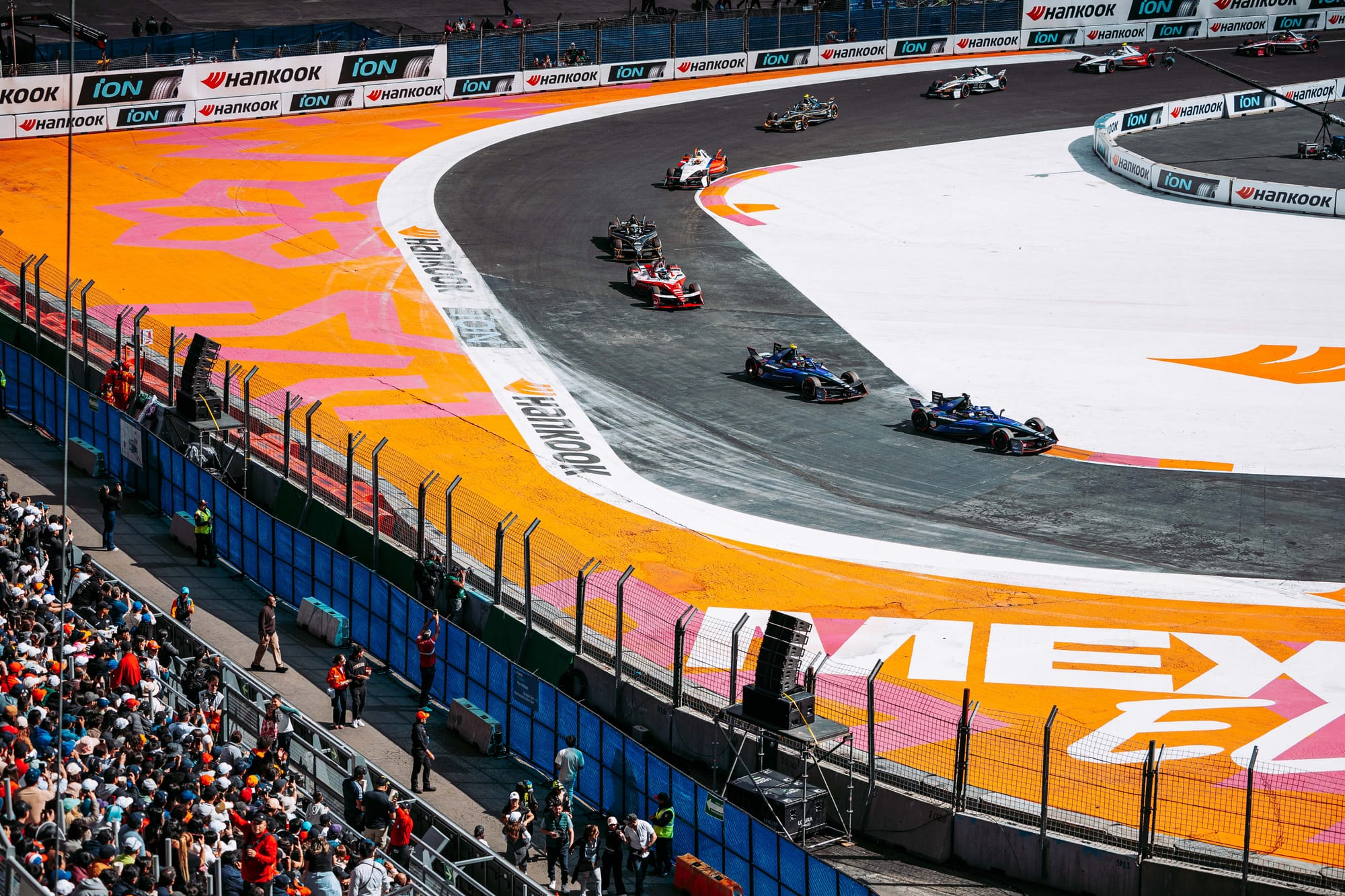
Get ready for industrial-style moans from drivers who feel slighted because their own team has had to prioritise a more beneficial strategy for their rival across the garage.
It will happen more obviously at some races rather than others and it is completely unavoidable due to the one-at-a-time and no double-stacking rule.
At the Jarama recce race in November, Antonio Felix da Costa and Maximilian Guenther stayed out long and fed back into the race order reasonably well.
From a strategy point of view, the use of attack mode has now been freed up to be used at any time in the race (bar the first two laps as usual) when originally it was going to be forbidden before the Pit Boost stops.
That allows more scope for creative strategies, with drivers now able to potentially pinpoint certain times of the race where they can build gaps prior to and after using their Pit Boost.
It promises to be a fascinating soup of strategic dexterity which will challenge teams and drivers alike.
Any technical trouble?
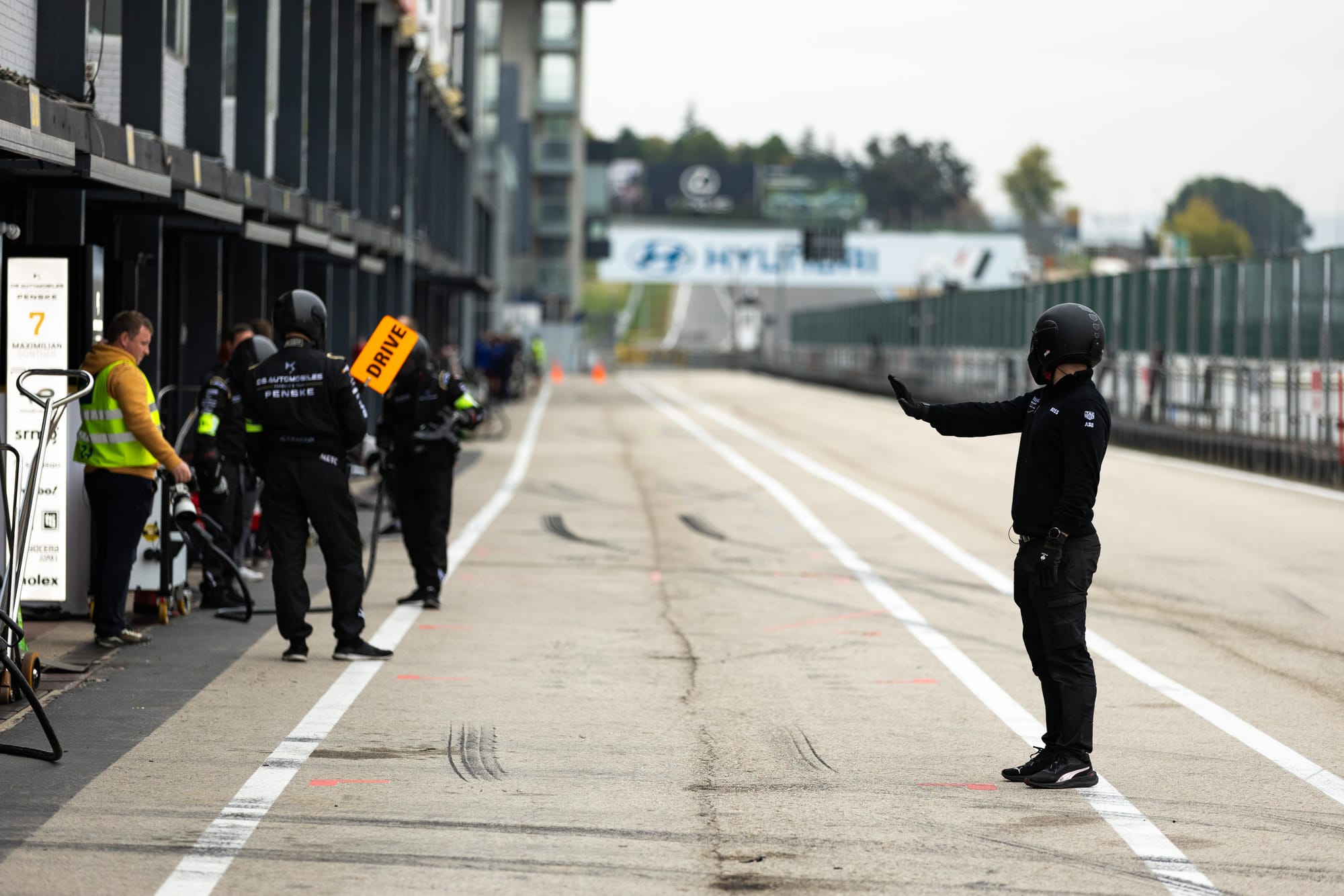
The reliability of the Fortescue Zero boosting devices has been good in recent tests and so far there has been no discernible long-term evidence to suggest that they affect the duty cycles of the spec RESS batteries used by all competitors.
But there have been some cabling issues that have wrong-footed teams, which are believed to have been understood and rectified in recent weeks.
The FIA would surely not have green-lit the pitstops for their race debut had there been any concern about equipment reliability - so it has to be presumed that no issues will affect the competitors on that front.
However, if there is any reason why, either through human error or difficulty getting the charge applied, then two spare boosters are available at the pit exit area to be used by team members.
The exact practicalities of this are yet to be outlined in detail. But it initially appears that teams will have to travel down the back of the pits independent of the car, and then enter the designated garage before stepping into the pitlane before applying the energy to the car.
However unlikely, it feels a messy way of going about a potential Plan B scenario. Should that play out then the affected cars' races will effectively be over anyway as they will go a lap down, so perhaps it will be a pointless exercise all round.
Commercially, the picture is less clear. The actual units themselves have as of yet not been branded and there is no official commercial partner for Pit Boost. If it is to be a long-term venture then both of those of things need to be addressed.

